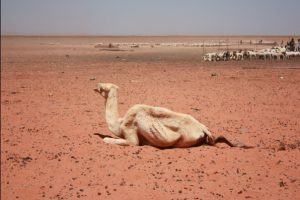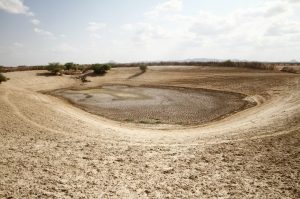Of Citizenship, Constitutions and Equitable Health Care in Kenya: The Plight of North Eastern Kenya
By Ahmed Idris @ugasow
On 6th January 2015, a sad story from Northern Kenya caught the attention of Kenyans and kept tongues wagging. A man is alleged to have stabbed his wife, Fatuma Ibrahim, several times leaving a knife stuck in her skull. The story is summarized in this newspaper article. This started a social media conversation among Kenyans on important questions such as domestic violence and gender equality. The gist of this discussion revolved around the plight of women in a region marked by patriarchy and gender inequality. Many called for the alleged attacker to be brought to justice. Civil society groups visited Fatuma in hospital with a number of people making donations to her cause.
As this conversation was taking place, very few people noticed a mind boggling aspect of Fatuma’s experience. First, Fatuma could not undergo any medical procedure in Wajir Town, her hometown in the dusty and desolate Northern Kenya. The largest medical facility in the Wajir town did not have the right personnel and infrastructure to mount this life saving procedure. Secondly, Fatuma could not travel to Nairobi for medical assistance simple because she did not have a National Identity Card, which was critical for her to travel to Nairobi, despite the fact that Wajir is not part of any other country. Fatuma lacked this crucial document that she should have had access to 15 years ago. It was only through high-level political intervention and the case being in the public domain that Fatuma was allowed to travel to Nairobi.
A sad story had ended well, but the case of Fatuma highlighted the plight of residents of Northern Kenyan in accessing health care. In the 50 years of independence of Kenya from colonial Britain, North Eastern Kenya, a territory characterized by poverty, communal conflict, banditry and lately the impact of terrorism, does not have a single Intentive Care Unit (ICU). This is despite the territory covering 127,358.5 km² with an estimated population of 2,385,572 according to the official census of 2009. Very few people considered the plight of Fatuma from the perspective that she could not go through a life saving surgical process because the entire region lacked personnel and the facilities to conduct such a procedure, fifty years after independence of Kenya. Very few considered her plight of not being able to access national documents which are her constitutional right.
For a country with high rates of trauma resulting from road traffic crashes, collapsed building and communal violence, the lack of investment in appropriate health care in certain geographical area brought to the fore the inherent linkage between the constitutional rights of citizens and their ability to access health care. Since independence, spatial inequality has characterized public service delivery in Kenya including access of health care. Areas that were further from the core, with little access to power and authority, were sites for underinvestment in public goods. With little access to opportunities and public services, residents of these regions such as North Eastern consider themselves visitors in their own country, less citizens, if citizens at all.

A Camel is unable to cope with the grought situation in Kenya, Marsabit. (Photo: Jervis Sundays, Kenya Red Cross)
The 2010 Constitution of Kenya upholds the right of all citizens to health care. Article 43 of the Constitution guarantees every citizen the highest attainable standard of health including the right to be guaranteed access to emergency healthcare. The focus of the constitution and the National Health Policy subsequently developed is to address the social and political determinants of health in Kenya. By improving governance and decentralizing service delivery, the constitution was intended to anchor a system of equitable distribution of resources between and among all Kenyans with a focus on uplifting hitherto marginalized regions and by extension people. The new constitution is supposed to reverse decades of political marginalization and underdevelopment in regions like North Eastern Kenya.
Five years since the adoption of the Constitution, this objective remains a mirage. North Eastern Kenya has witnessed only marginal improvement of health care with some regions deteriorating further. The last three years has witnessed movement of personnel away from this region ostensibly due to insecurity, but underlying issues still remains the lack of infrastructure at the facilities and poor quality of life that civil servants strive to escape. Fatuma is therefore not alone in her inability to accessing health care within her own country. She is only being cited in this article as an example.
What her case highlights is how sections of citizens cannot access life saving procedures because they are unable to travel within their own country, putting accessibility of health care in Kenya in doubt. Imagine the victims of road accidents or violence whose cases do not benefit from public attention or political support? Does it mean that these are condemned to their own fate with access to health care being a right on paper and not realizable? What North Eastern Kenya needs is not a social media coverage on the sad story of Fatuma, but a true civic conversation on the meaning of citizenship for hundreds of thousands like her who everyday face hardships of life, unable to access health care in their own region and unable to travel elsewhere in Kenya to seek medical services. This is the plight of the citizen in North Eastern Kenya.



0 Comments